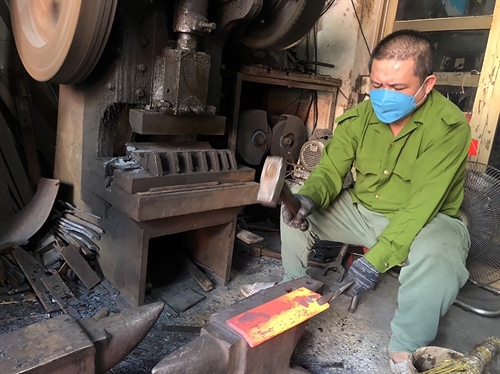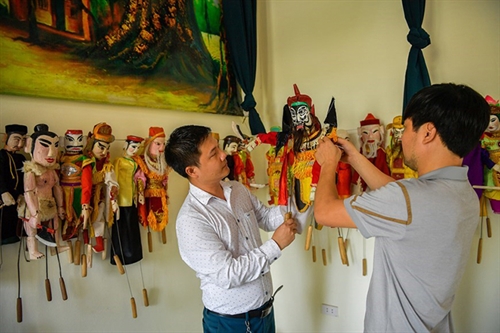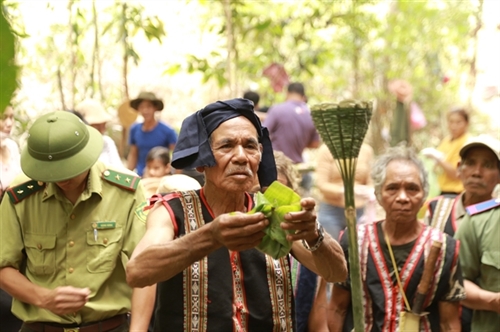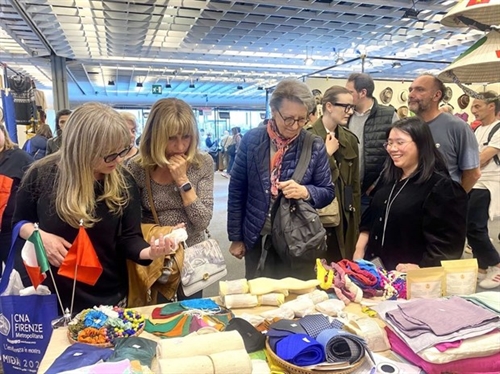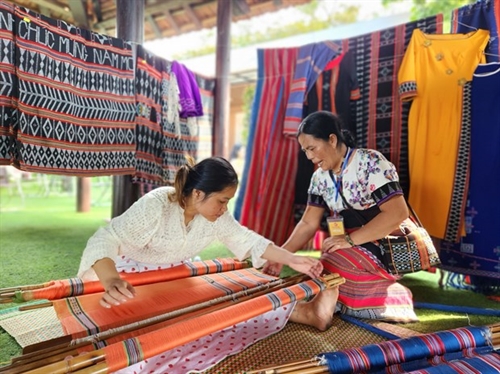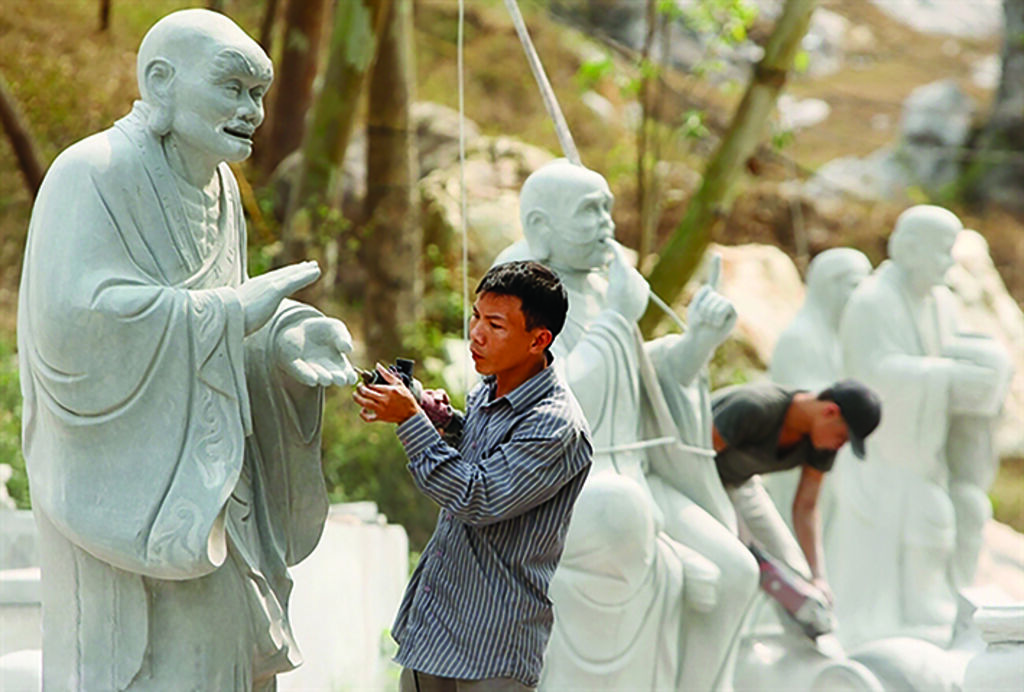 |
| Long Chau Mieu stone carvers are well-known for their sculpture-carving techniques__Photo: VNA |
Lying at the foot of the Tram mountain, 17km away from the center of Hanoi to the southwest, Long Chau Mieu village, also known as Tram village, in Phung Chau commune, Chuong My, district is one of the most famous craft villages for fine-art stone carving in the north of Vietnam.
Nobody knows exactly when stone carving started in the village. According to some old carving masters, it must have been appeared in the village around 200 years ago. “I had seen my father making carved stone products since I was born”, Nguyen Van Cung, one of the oldest artisans shared
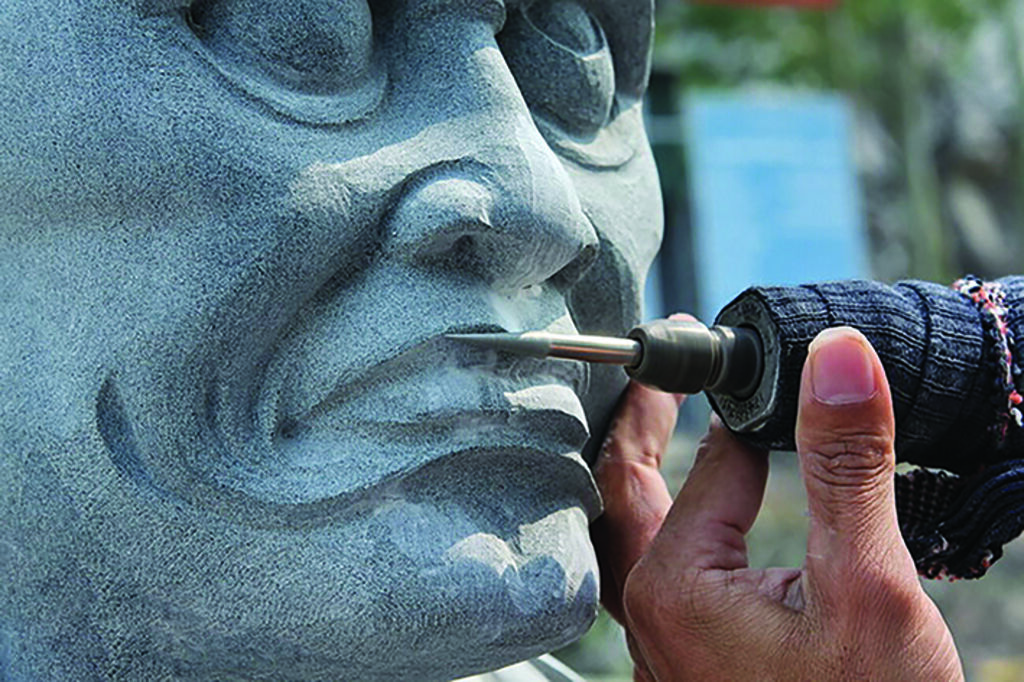 |
| Small details require a high level of craftsmanship__Photo: VNA |
In the early stages, stone carvers in Tram village only made utensils serving their daily life like mortars, bathtubs and feeding troughs. Through many ups and downs of history, younger generations learned from older generations, improved skills and techniques and started to turn out more sophisticated products. Some masterpieces that showcase the skillfulness and aesthetics of Tram village’s stone carving artisans are preserved in the village’s ancient communal house. The delicate sculptures of the mascot in the open-air altar, the pair of stone dragons on the two sides of the entrance gate, and especially the unique pair of stone beds with complicated carving patterns are the villagers’ pride that prompts them to preserve and promote their traditional craft.
 |
| Today more and more mechanical equipment is used in the stone-carving process__Photo: danviet.vn |
Nowadays, the village’s main product line is stone sculptures, ranging from Buddha statues and carved animals to large outdoor decorative items. Villagers are also specialized in restoring antique stone structures of temples and pagodas.
Tram villagers have left their marks on many significant cultural and historical constructions around the country. Some of their typical works include the stone bridge at Yen Tu pagoda in Quang Ninh province, the elephant statue displayed at Do Temple in Bac Ninh province, and repair of broken stone steles at Van Mieu - Quoc Tu Giam in the capital city of Hanoi.
Stone cutting and shaping can be considered the hardest stage of the carving process. In the past, Tram villagers exploited stones from the Tram mountain. At present, stones can be bought from suppliers in Quang Nam, Thanh Hoa and Tuyen Quang provinces. Thanks to mechanical machines, craftsmen no longer have to do heavy jobs but focus their energy on things that require a high level of sophistication.
 |
| Buddha carved stone statues are the most well-known products of Long Chau Mieu craftsmen__Photo: qdnd.vn |
As explained by Nguyen Van Truong, owner of Truong Nguyet - one of big stone carving workshops in Tram village, Buddha sculptures can be considered most sophisticated and only skillful artisans are capable of making distinctive and soulful statues.
There are no formulas or precise instructions on how to carve the eyes, nose and mouth of a Buddha statue. Even small details like corners of the mouth will affect facial expressions of the statue and therefore, require great attention of carvers. “Craftsmen have to reply on their feelings, skills and experience to decide what to do,” he said.
In December 2015, Long Chau Mieu stone carving village was awarded a title “Hanoi’s Traditional Craft Village” by the Hanoi Municipal People’s Committee.
As shared by Nguyen Dinh Hanh, Deputy Party Secretary and Chairman of the People’s Committee of Phung Chau commune, Tram village is home to 400 households with 1,360 people. The village now has 30 workshops, creating jobs for around 300 local laborers and its products are sold in not only domestic market but also neighboring countries like Laos, Cambodia, and Thailand.-





